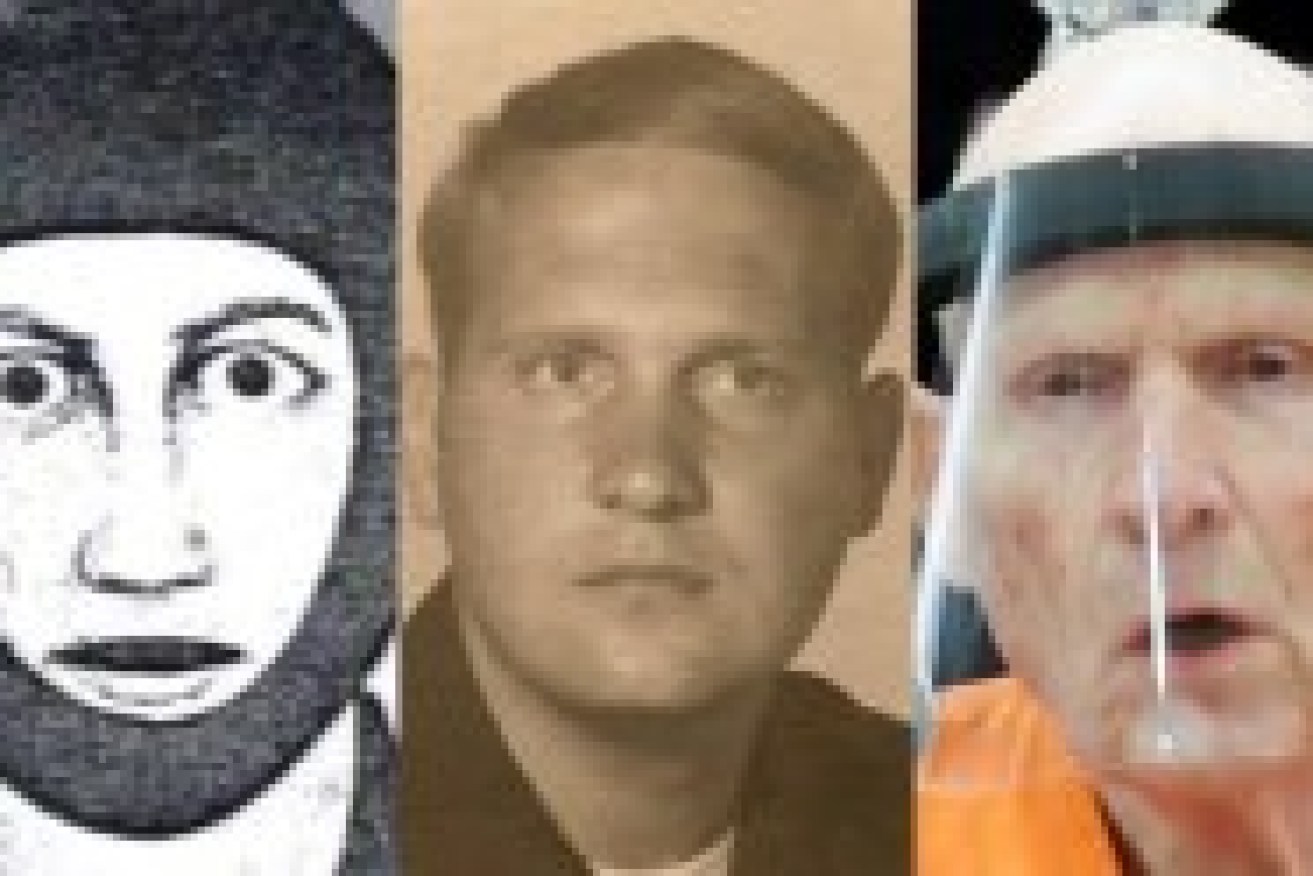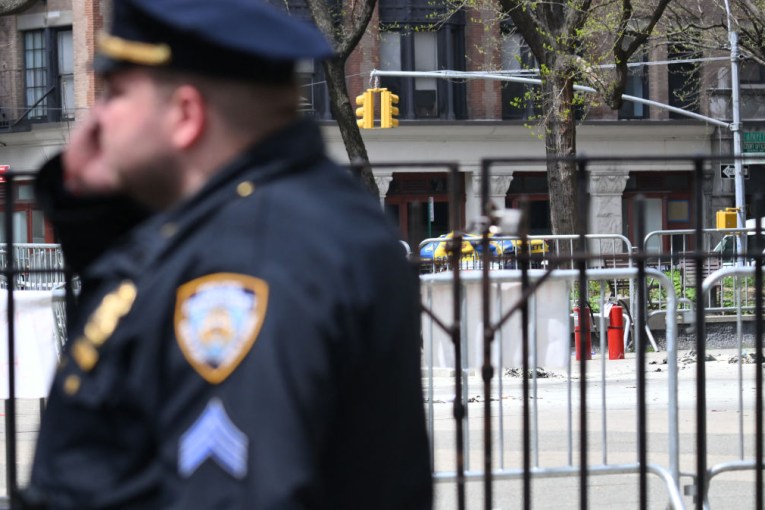The Golden State Killer: How it took four decades to catch the serial predator who terrorised California

Multiple police departments searched for the man who would eventually be known as the Golden State Killer throughout the 1970s. Photo: ABC
A former California police officer who confessed to 13 murders, dozens of rapes and terrorising victims in the 1970s and 80s has been sentenced in the US, saying he was “truly sorry”.
It was the early hours of the morning in the spring of 1978 when Bob and Gay Hardwick woke up to a bright light shining in their faces.
The young couple lived together in a small house in the northern California city of Stockton.
It took the Hardwicks a moment to realise what had woken them up was an armed intruder holding a torch at the foot of their bed.
The deadbolt on the back door had been broken for a while, but this was the ’70s. High-tech security systems and a nationwide fear of crime was yet to really take hold.
The man standing in their bedroom was one of the reasons Americans started locking their doors.
As their night of horror unfolded, they had no idea that dozens of women, girls and couples across California had endured almost the exact same crime.
Bob Hardwick was tied up and left on the bed with dishes stacked on his back, so he could not move without making noise.
Gay Hardwick was taken to the living room, where she was assaulted repeatedly over several hours.
“He ate from my refrigerator and he drank two beers while I lay bound and blindfolded … he ransacked our home, and in between, he tormented me with threats of death,” she told a Sacramento court this week.
Forty-two years after the attack, the Hardwick finally got to see the man behind the blinding torch light.

Gay Hardwick (left) and her husband Bob Hardwick are comforted by the District Attorney Tori Verber Salazar as they provide a victim impact statement in court. Photo: San Francisco Chronicle Via AP: Santiago Mejia
The attacker known by many names
His reign of terror was so prolific and protracted that police thought they were dealing with multiple assailants.
In the press, he was known by many names: The Visalia Ransacker. The East Area Rapist. The Original Nightstalker. The Diamond Knot Killer.
When authorities realised 13 murders and at least 50 rapes may be the work of one man, he became known as the Golden State Killer.
And in 2018, the world finally learned his real name: Joseph James DeAngelo.
After an investigation spanning four decades and 11 Californian counties, police arrested one of their own.

Joseph James DeAngelo was arrested in 2018 and charged with 13 counts of murder and 13 counts of kidnapping. Photo: AP: Sacramento County Sheriff’s Office
“What a gut punch it was that I had been brutally raped by a full-time police officer,” Gay Hardwick told the court.
“To learn that DeAngelo, who was sworn to serve and protect, used his skill set to terrorise and rape … that was staggering.”
How a police officer became the Visalia Ransacker
America’s western coastline used to be something of a breeding ground for serial murderers.
FBI profiler John Douglas once called the Pacific North-West region, stretching from northern California to Washington, “America’s killing fields”.
The Zodiac Killer murdered several people around California’s Bay Area in the late ’60s before vanishing in the early ’70s.

Joseph James DeAngelo served as a police officer from 1973 until 1979 when he was fired for shoplifting. Photo: AP: Sacramento County Sheriff’s Office
Around the same time, Ted Bundy began kidnapping young female students outside Seattle.
Before he joined the ranks of the Pacific North-West’s most notorious criminals, Joseph James DeAngelo was a burglary unit police officer in central California.
He was eventually fired from the force after he was caught shoplifting a hammer and dog repellent in 1979.
California’s statute of limitations means DeAngelo was only charged with murder and kidnapping. The rape and burglary accusations will go unpunished by the court.
But he has admitted that during his days, he investigated break-ins. At night, he committed them.
Throughout the mid-1970s, a man known only as the Visalia Ransacker broke into more than 120 houses where he rifled through underwear, vandalised property, and ignored cash in favour of stealing cheap trinkets.
In 1976, DeAngelo moved 340 kilometres north of the Visalia area.
The robberies down south stopped, but suddenly police in Sacramento were grappling with a spate of home invasions and sexual assaults.
Prank phone calls, an intruder, and a pile of dishes
The attacks in northern California all seemed to follow the same script.
Strange phone calls by someone breathing heavily in the days, weeks, and even months, leading up to the crime.
Women who were home alone were often targeted, but the East Side Rapist would eventually begin to favour attacks on couples.
Several men, like Bob Hardwick, told police they were forced to lie with a pile of plates on their back as their loved one was raped.
The attack on the woman or girl would go on for hours, while he took breaks to eat their food or rifle through their belongings.

Multiple police departments searched for the man who would eventually be known as the Golden State Killer throughout the 1970s. Photo: Wikimedia Commons: California’s Law Enforcement Agencies
Eventually he would creep away, leaving his victims bound and unsure whether their assailant had finally left the house.
Police were also taunted by the rapist, who rang the station several times.
“I’m the East Side Rapist and I have my next victim already stalked and you guys can’t catch me,” he said in a call to police in 1977 before hanging up.
By 1978, when he attacked the Hardwicks, the East Side Rapist’s violence was starting to escalate.
“He was beginning his murder spree, his transition. We were very lucky that we lived that night,” Mrs Hardwick told local media in 2018.
The attacks in the Sacramento area abruptly stopped in 1979 when DeAngelo headed back to southern California.
That’s when the murders started.
Two killers stalk Santa Barbara at night
As a new decade began, Joseph James DeAngelo took on a new nickname in the newspapers: the Night Stalker.
It took many years for police to realise two serial killers were at work in the Santa Barbara region around the same time.
DeAngelo, whose killing spree pre-dated another serial rapist and murder, Richard Ramirez, by four years, was eventually renamed the Original Nightstalker.
DeAngelo has admitted to killing nine people between 1979 and 1981, continuing his pattern of attacking couples in their homes.
Four additional murders in the early ’70s would later be connected to him.
There was a brief reprieve for southern California that lasted five years. Police wondered if the killer had died or been arrested for another crime.
But then in 1986, the Golden State Killer struck one final time: he murdered 18-year-old Janelle Cruz in her Orange County home.

Janelle Cruz was just 18 when she was murdered by Joseph James DeAngelo in 1986. Photo: Facebook: Cruz Family
Janelle was DeAngelo’s last known victim. He seemingly vanished for 30 years, and no-one knows exactly why he decided to stop.
Paul Holes, a cold-case investigator who was instrumental in the eventual capture of the Golden State Killer, believes he simply grew too old.
“By then, he was 41. Not over the hill by any stretch of the imagination, but he’s getting older,” he told the San Jose Mercury.
How did police miss DeAngelo for so long?
Victims who spoke out against DeAngelo said that in the 1970s, police did not take rape seriously, which allowed him to go undetected for so long.
“In 1976, women were treated more like suspects than victims when it came to rape,” DeAngelo’s first-known victim, who did not want to be named, wrote in her statement to the court.
“My sense of importance in this world diminished with this treatment.”
It wasn’t until DNA testing that California law enforcement realised the Visalia Ransacker, the East Area Rapist and the Original Nightstalker were a single perpetrator.

Joseph DeAngelo was called the Night Stalker when he committed a string of murders in the Santa Barbara region of California in the early 80s. Photo: Federal Bureau Of Investigation
In 2018, police armed with genetic material found at crime scenes from the ’70s and ’80s, took a controversial step to try to finally solve the case.
Investigators turned to GEDmatch, a genealogy website that allows people to submit their DNA samples to explore their family tree.
Unbeknownst to DeAngelo, about 20 of his distant relatives had used the website.
As they went through the DeAngelo family tree, they came across a man who perfectly fit the psychological profile drawn up of the Golden State Killer: A former cop who had lived in every city where the rapes and murders had occurred.
Not only that, photos of DeAngelo’s youth eerily resembled the police sketches created from witness descriptions.
The last thing left to do was collect a DNA sample from the man himself.
The Golden State Killer is captured, but debate still rages
After staking out his home in the suburbs of Sacramento for several weeks, police finally got what they needed: a discarded tissue from DeAngelo’s rubbish.
The genetic material matched the samples that had languished in evidence storage for decades.

Police raided the home of Joseph James Deangelo in northern California in 2018 after matching his DNA to dozens of crime scenes. Photo: Reuters: Fred Greaves
The Golden State Killer was finally off the streets. DeAngelo, then 72, was living with his daughter and granddaughter at the time of his arrest.
While victims and police celebrated, the law-enforcement community debated the ethics of using genetic information of unwitting Americans to solve a crime
“This is really tough,” Malia Fullerton, an ethicist at the University of Washington who studies DNA forensics, told the New York Times in 2018.
“He was a horrible man and it is good that he was identified, but does the end justify the means?”
DeAngelo was quick to make a deal with prosecutors to avoid execution.
He pleaded guilty to 13 counts of first-degree murder, as well as 13 counts of kidnapping. While he admitted to dozens of rapes and burglaries, the statute of limitations had passed on those crimes.
He will spend the rest of his life in a maximum-security prison after being sentenced to 11 consecutive life sentences without the possibility for parole plus an extra life sentence.
DeAngelo had spent his trial sitting silently, staring straight ahead while his victims told the court what he did to them. Loved ones held up photos of the men and women he killed.
He was not expected to speak, but before his sentencing DeAngelo rose from a wheelchair, took off his mask and said to the court: “I listened to all your statements, each one of them, and I’m truly sorry for everyone I’ve hurt.”

Families of murder victims or the survivors who died before the trial held their photos up in court. Photo: Reuters: Fred Greaves
He has offered no apology to the people whose lives he changed forever, instead trying to blame his shocking crimes on an alter-ego he calls Jerry.
“I didn’t have the strength to push him out. He made me. He went with me … he’s a part of me,” DeAngelo told interrogators after his arrest.
“I pushed Jerry out and had a happy life. I did all those things. I destroyed all their lives. So now I’ve got to pay the price.”








